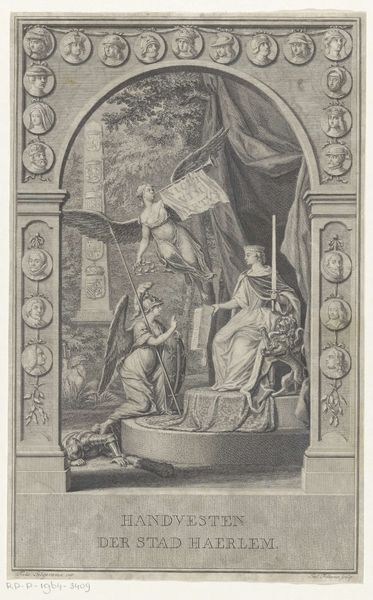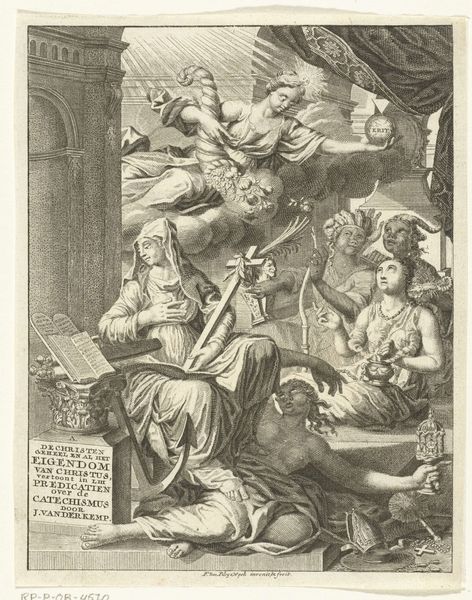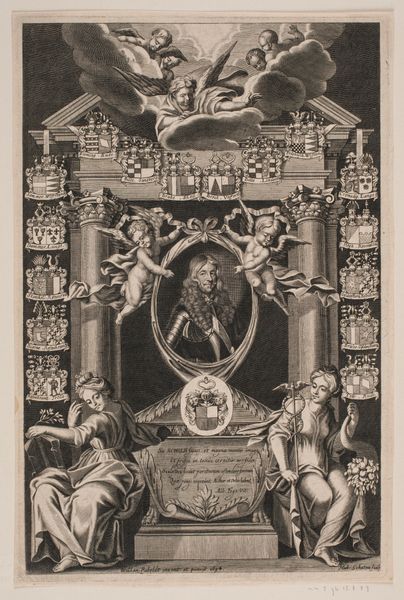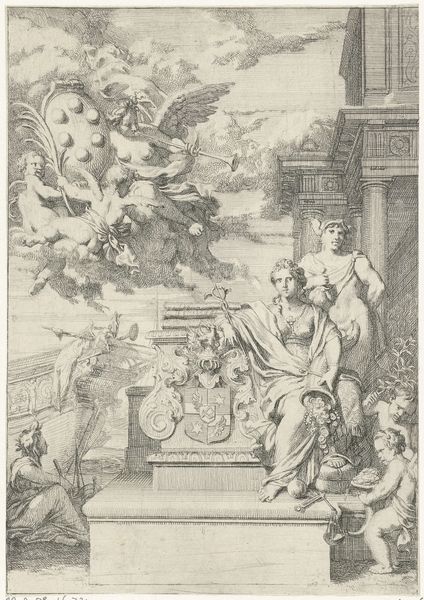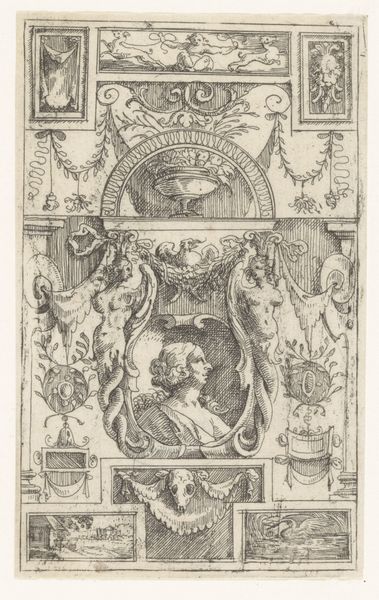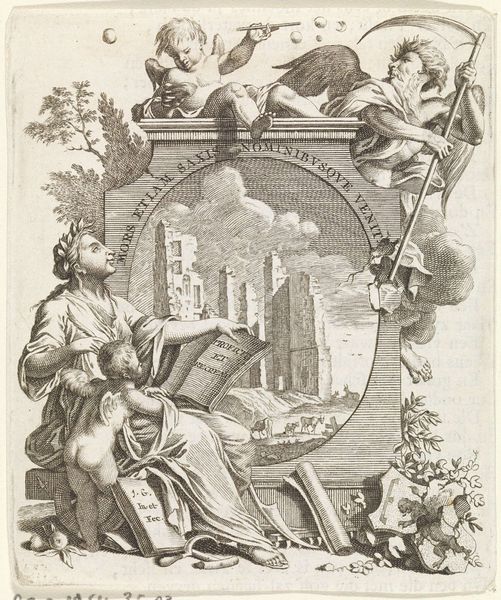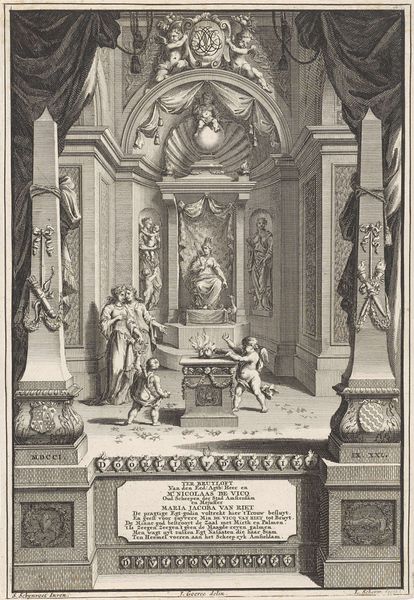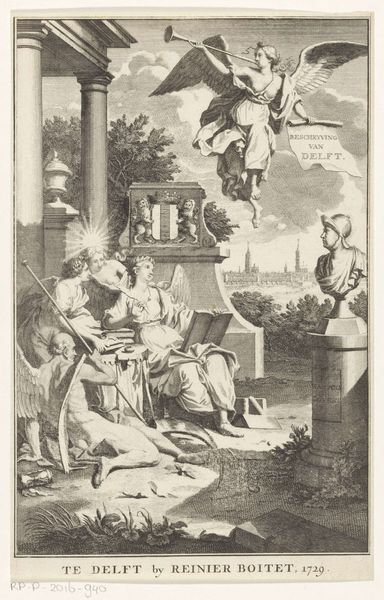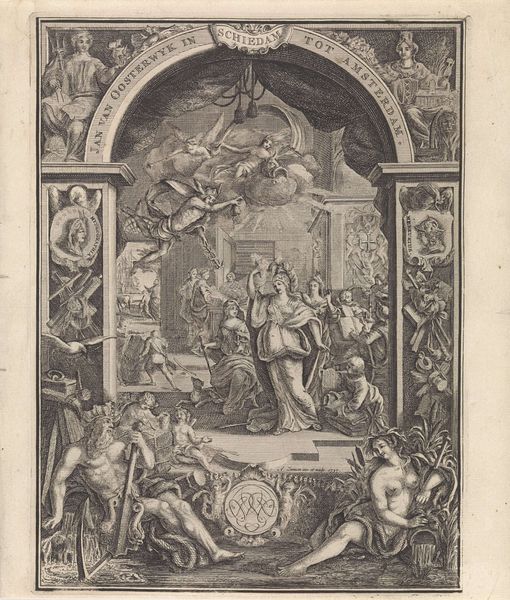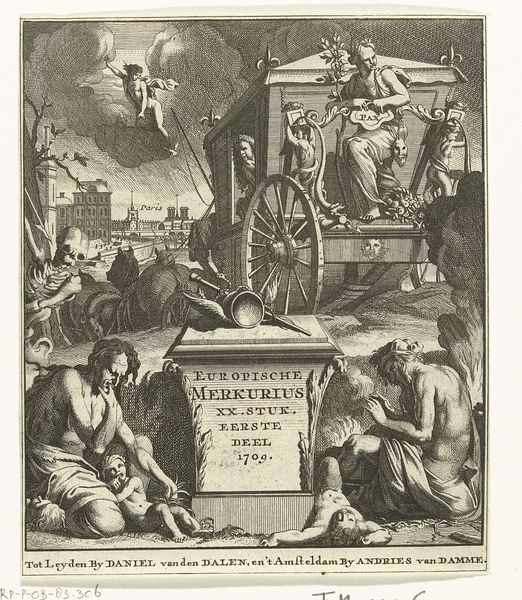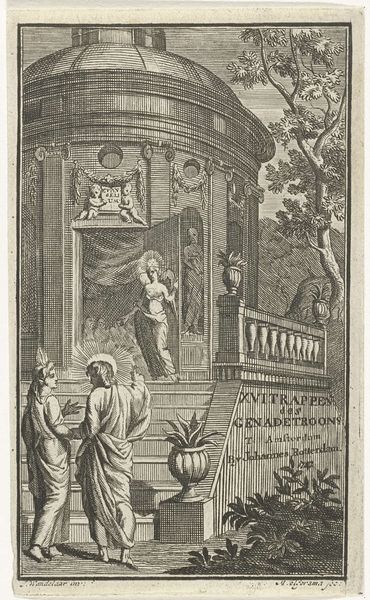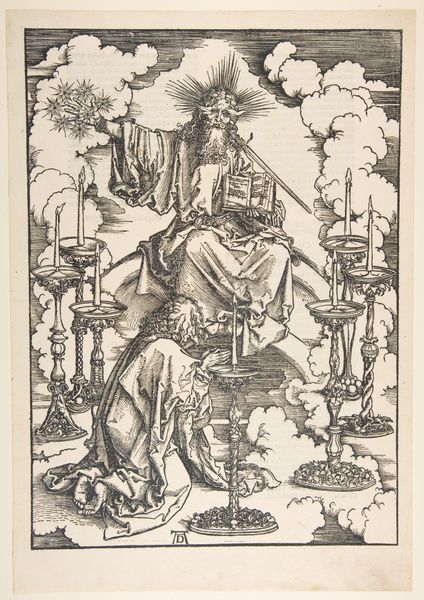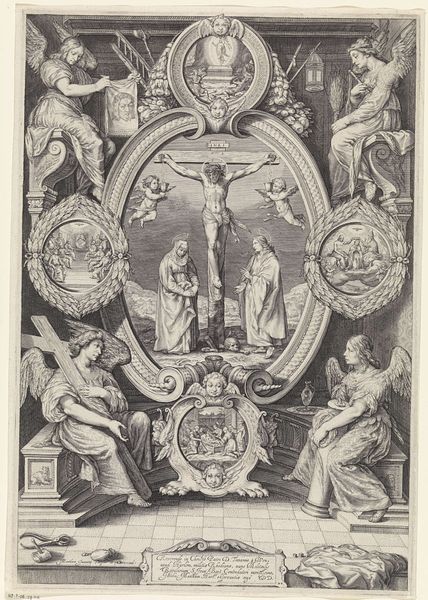
Allegorische titelpagina met diverse verwijzingen naar de stad Rome 1737
0:00
0:00
drawing, ink, sculpture, pen, engraving
#
drawing
#
allegory
#
baroque
#
pen drawing
#
ink
#
sculpture
#
pen
#
cityscape
#
history-painting
#
engraving
Dimensions: height 337 mm, width 221 mm
Copyright: Rijks Museum: Open Domain
Curator: Here we have an allegorical title page from 1737 by Matthijs Pool, currently held in the Rijksmuseum collection. It's titled "Allegorische titelpagina met diverse verwijzingen naar de stad Rome," or "Allegorical Title Page with various references to the city of Rome." Editor: Oh, my, it’s a bit of a melancholic jumble, isn't it? It feels like walking through a beautiful antique store in the rain. You want to find treasures but you’re mostly confronted with the weight of the past, of history. Curator: Indeed. Pool’s meticulous use of line, evident in the ink and pen work, organizes various symbolic elements within a carefully constructed visual field. Observe how the textures—the smoothness of sculpted forms, the roughness of draped fabrics—are articulated. The formal structure seems almost architectural. Editor: Yes, you’re right, but even those structured elements feel mournful! The figure on the left is seated, head in hand. The textures contribute to a quiet despair; there's an abandoned feeling that even the detail can’t erase. It all seems terribly burdened. Curator: One could argue that the density is integral to its meaning, evoking Rome’s rich, layered history. Notice how elements like the she-wolf suckling Romulus and Remus are juxtaposed with implements of war and artistic creation. Editor: Right, history is literally being made...but what of the little cupid figures so intent on feeding. Even that feels sad when contrasted with those brutal machines behind. All those layers somehow intensify a sense of inescapable fate. What do you make of that contraption in the back? It reminds me of torture. Curator: Well, I can't say it represents torture but these objects reflect power, history, and tradition which might also be tortuous depending on what you extract from history. Consider that the artist also integrated sculptural elements throughout the composition. Editor: Fascinating. Despite the overt Roman references, I keep seeing the work through a lens of personal rather than collective experience, almost as an acknowledgement of personal struggle. It's curious how the visual components are arranged. The work transcends simple allegory; there’s real emotion embedded there. Curator: Precisely, the interplay between technique and symbolic weight provides, in my estimation, a valuable case study. Editor: I agree; thinking about it all together, maybe this drawing suggests that history is never a monument. It’s alive and vulnerable in a world that might well forget it. It may only endure in these quiet intimate interpretations.
Comments
No comments
Be the first to comment and join the conversation on the ultimate creative platform.
